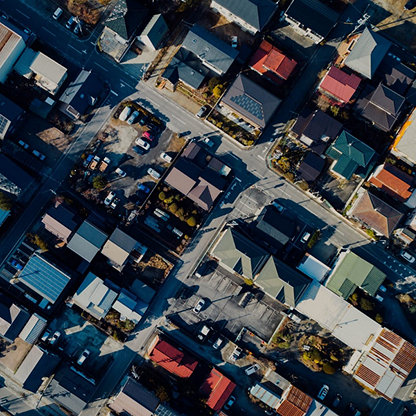Cities may be economic engines, but people are their driving force and what give them life. Darren Allen FRICS explores how sustainable placemaking can strengthen the connection between people and places in Romania and examines the importance of bringing nature-inspired design to urban areas.
Cities are tremendous economic engines for society. More than 80% of global GDP is generated in cities, and if managed properly, urbanisation can foster sustainable growth through increased productivity and innovation. Today approximately 56% of the world's population (4.5 billion inhabitants) live in cities, with urban populations expected to more than double from today's levels by 2050. With nearly seven out of ten people expected to live in cities in the future, increasingly complex demands will be placed on urban spaces. To adapt, urban planning will have to undergo significant transformations.
Putting people at the centre of place
The roots of the placemaking phenomenon date back to the 1960s. Two planners, Jane Jacobs and William H. Whyte advocated a community-focused strategy; a bottom-up approach to designing places for people, not for cars and traffic.
Placemaking is both a comprehensive idea and a practical approach to improve and design public space. It inspires people to rethink and reshape the public realm as the heart of every community. Not only does this strengthen relationships between people and places, but it also enhances the character of any city.
More than just advertising better urban design, placemaking shapes our social lives in public places. Placemaking helps us to be creative. It helps us to consider the patterns of public spaces, being especially mindful of physical and sociocultural identities which contribute to the image of a place, thereby supporting its continued development. Simply put, placemaking is the process of turning a space into a place directly or indirectly, connected with social values appreciated by an entire ecosystem of communities.
Differentiating space and place
The difference between space and place can be described by the extent to which people give importance to specific areas. Meaning can be given, or derived, in two different ways:
- Directly and intimately, for example through sensory experiences such as sight, smell, touch, taste, and sound.
- Indirectly, as conceptual or metaphorical, conveyed by symbols, signs, and art.
Meaning is also individual: what placemaking is to one person and what it is to one group or developer is different to another, with the centre revolving around experience. Places often become emotionally important to people and can shape their identity and sense of self.
“Placemaking should not solely be viewed as a means to drive premiums and product differentiation”
While the physical space is important in placemaking, the process of creating it is equally crucial. The act of making a place helps to build connections and promote civic engagement and empowers citizens to take ownership of their communities. This, in turn, helps to build social capital and strengthen the bonds within a community. By involving people in the process of placemaking, communities can create spaces that are truly reflective of their needs and values. As put by architect Mark Lakeman of Portlands City repair organisation:
"The physical projects are just an excuse for people to meet their neighbours... The relationships that grow out of the ‘making’ are equal to, if not more important than, the places that result."
For example, in the Romanian real estate industry, placemaking is becoming these days a powerful engine of value creation at all levels, and not only in the monetary sense. Placemaking should not solely be viewed as a means to drive premiums and product differentiation, nor as a way to fulfil a social responsibility at the expense of developers and investors. Instead, placemaking can be viewed as a tool to create shared value for people and communities in a crowded urban landscape.
A new kind of user experience
We are witnessing the unfolding of the fourth industrial revolution. The evolution of IoT, artificial intelligence, and robotics are altering the way we move, live, work and play. The cutting edge of urban design is not only where we design spaces with the public’s desires in mind; it is also where we incorporate 'green' thinking and technology, to build a sustainable future for our communities.
“Contrary to common usage, UX emphasises the non-utility aspect of HCI and focuses on the user’s emotion, feeling, and the significance and value of such interaction in daily life.”
Recent years have seen an increasing emphasis on creating 'phygital' spaces, which seamlessly blend the physical and digital worlds, helping to create more engaging and interactive experiences for people. By incorporating phygital elements, placemakers can help to enhance the overall user experience and create more vibrant and dynamic spaces.
The concept of user experience has been widely spread and rapidly accepted in the field of HCI (human-computer interaction) but appears lost in translation within industries. User experience (UX) is seen as a desirable thing, although what it really means is still open and controversial. Contrary to common usage, UX emphasises the non-utility aspect of HCI and focuses on the user’s emotion, feeling, and the significance and value of such interaction in daily life. As explained by its pioneer and inventor, Don Norman:
“[User experience] is used by people to say, ‘I’m a user experience designer, I design websites,’ or ‘I design apps.’ […] and they think the experience is that simple device, the website, or the app, or who knows what. No! It’s everything — it’s the way you experience the world, it’s the way you experience your life, it’s the way you experience the service. Or, yeah, an app or a computer system. But it’s a system that’s everything.”



